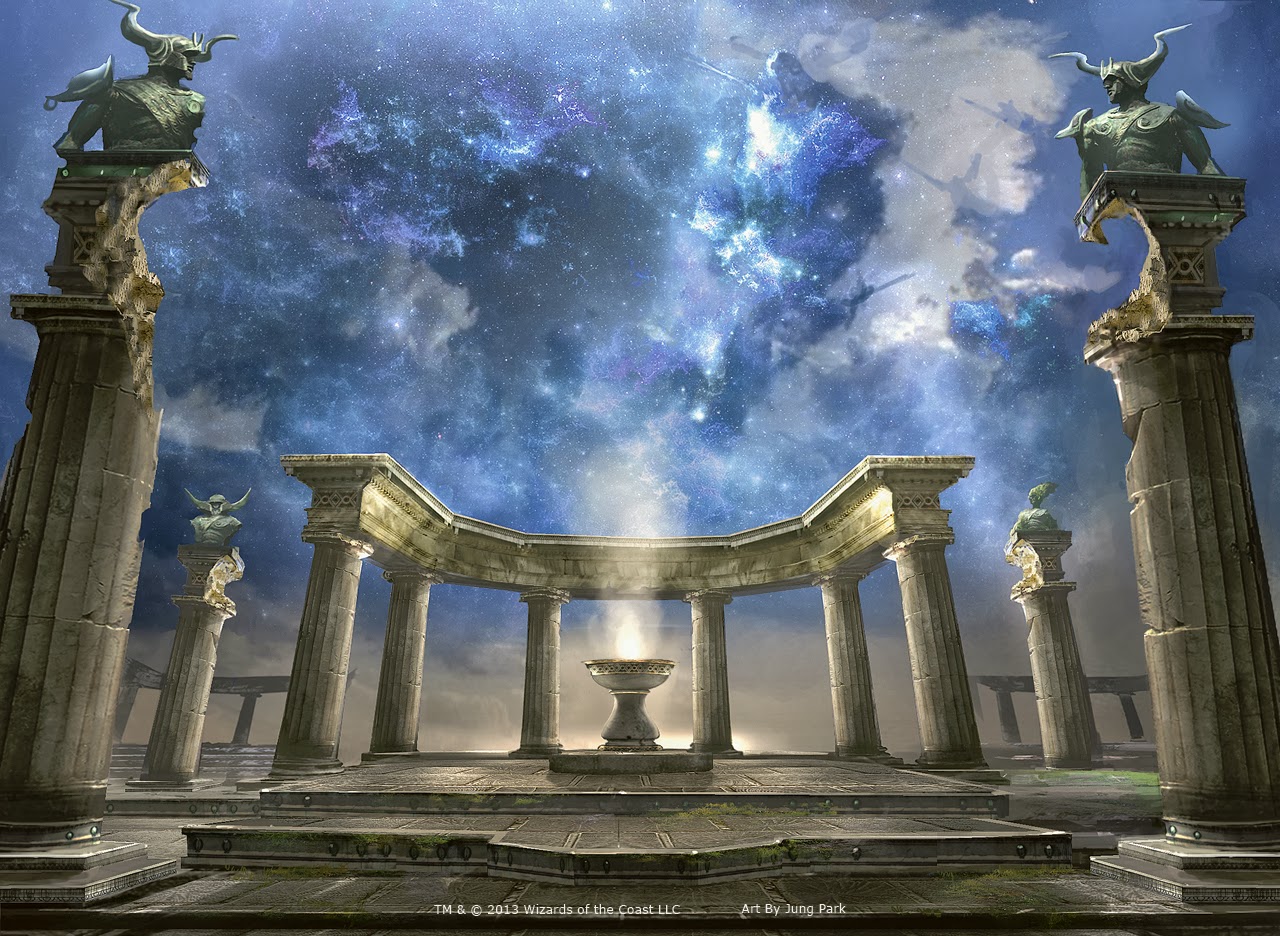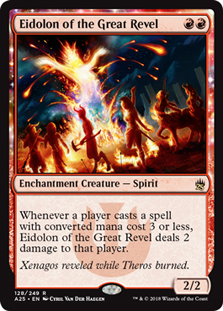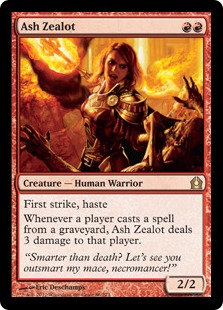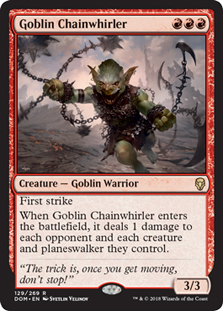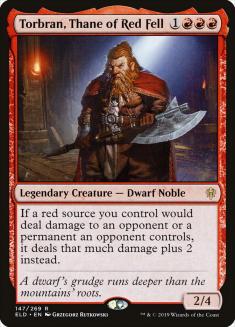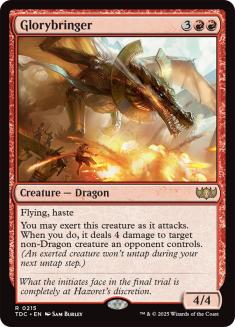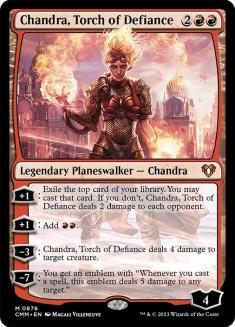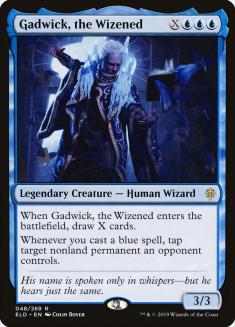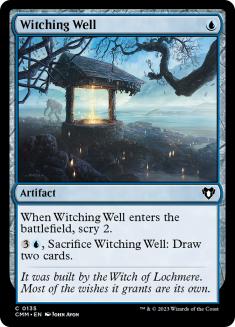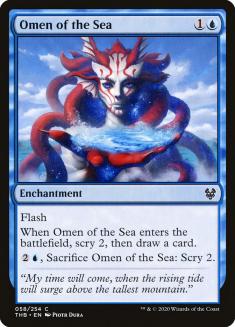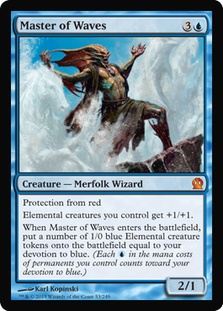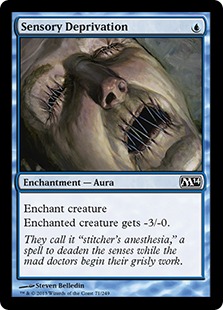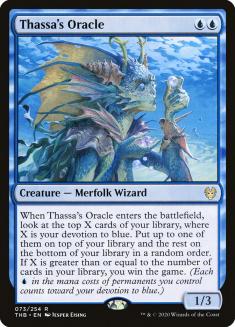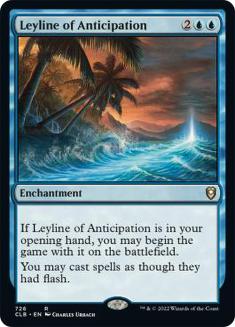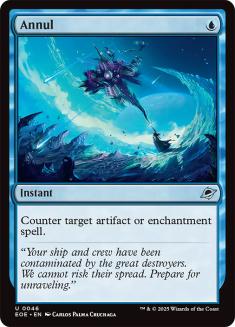At the inception of the Pioneer format, I was under the impression that Nykthos, Shrine to Nyx could potentially get the axe. It was powerful. Too powerful. Of all the degenerate decks in Pioneer, the most busted was Mono-Green Devotion, and that was almost entirely due to the strength of Nykthos. But it seemed like the people in charge at Wizards of the Coast (WotC) decided to ban around it, thinking Nykthos could be a healthy part of the Pioneer metagame.
And to an extent, they were right.
At the moment, I don’t think there’s any real argument that the best deck in Pioneer is Dimir Inverter. It has a combo finish and plays a lot like a control deck. It puts Dig Through Time through its paces, utilizing the powerful instant to find combo pieces and shrink the graveyard for Inverter of Truth. Our job isn’t to break the format anymore, but instead to figure out how to metagame our decks to fight against the current narrative. And with combo decks being the most played, it only makes sense that we would find ourselves looking for ways to interact with those combos if, like me, you refuse to play said combos yourself.
So today’s article won’t be another deep dive on Inverter of Truth and whether or not you should maindeck the second Mystical Dispute. You probably should. Instead, we’re going to focus on Nykthos and its role in the format.
Seeing Red
Creatures (28)
- 4 Ash Zealot
- 4 Burning-Tree Emissary
- 4 Fanatic of Mogis
- 4 Eidolon of the Great Revel
- 2 Glorybringer
- 4 Goblin Chainwhirler
- 3 Torbran, Thane of Red Fell
- 3 Anax, Hardened in the Forge
Planeswalkers (3)
Lands (25)
Spells (4)
Sideboard

This version of Mono-Red Devotion comes from aspiringspike, and this list is something I’ve definitely been meaning to try. After WotC banned Leyline of Abundance, it didn’t take long for me to try out different color combinations with different Leylines to fuel Nykthos. This version is no different, utilizing Leyline of Combustion to turbo out some large monsters or Fanatic of Mogis to deal your opponent a thousand damage.
The real genius of this build is the creature suite, and how it is conformed to attack the current combo-heavy metagame. Eidolon of the Great Revel really puts a hurt on all the combo and control decks, often locking them out of the game if you get it down early enough. While Eidolon of the Great Revel is one of the best cards in Modern, it hasn’t really had a chance to shine in Pioneer just yet. But if the current combo-heavy format continues, I can only guess how important Eidolon of the Great Revel is going to be for red decks moving forward.
Ash Zealot is the other two-drop that really jumps out as “What the heck?” But if you look at how the Underworld Breach deck operates, you realize just how good Ash Zealot can be. A medium body with first strike, haste, and an extra ability that stifles certain combos makes Ash Zealot a slam dunk here. The two pips of devotion also help!
The rest of the deck is playing reasonably costed threats, all with varying degrees of ridiculousness when super-charged by Nykthos. For example, Goblin Chainwhirler is just a great card, and specifically good in this style of deck because it just gives you something to slay all those tiny creatures that the opponent could throw in your way. But when you combine it with Nykthos and can cast both it and Torbran, Thane of Red Fell in the same turn, things start to get a little ridiculous. In fact, Nykthos might specifically be busted in this deck because you get to cast Torbran in the same turn as literally any other spell in your deck!
Maybe Torbran was the busted card all along!?
The Glorybringer slot is confusing to me, but it makes sense if you understand balance in deckbuilding. In a combo-heavy format, Glorybringer is lackluster. It’s just too slow. Its true strength lies in the format revolving around creatures, removal, planeswalkers, and combat. When that’s the case, cards like Glorybringer are exceptional. Before Theros Beyond Death, I would have said Glorybringer and Bonecrusher Giant were in the Top 5 cards of the format, if only because of their strength in fair-on-fair matchups. At the time, that’s all Pioneer really was.
As for the sideboard, Boros Reckoner is one heck of a card against the red decks of the format. Many Nykthos decks falter against them, as their creatures die and Nykthos turns to crap. But this version has a bit more interaction, and creatures like Boros Reckoner are absolute monsters against them. You can still lose, but having access to a creature as powerful as Boros Reckoner is awesome. It almost makes me want to put it in the Heliod-Ballista deck.
Almost…
This deck hits pretty hard but also has some resiliency to removal. Thanks to Anax, Hardened in the Forge and Chandra, Torch of Defiance, generic spot removal won’t always get the job done. And if we’re talking about games that go late, this deck has some seriously good topdecks. Obviously decks that rely on Nykthos are somewhat vulnerable to removal and sweeper effects, because they need to keep permanents on the battlefield to give Nykthos any amount of utility. But having a deck full of threats is generally better than a deck full of answers, and when some of your threats are resilient to removal, then you can occasionally string together two or three that get the job done, even if your opponent has a decent amount of interaction.
Feeling Blue
Creatures (19)
- 2 Thassa, God of the Sea
- 4 Master of Waves
- 3 Harbinger of the Tides
- 4 Gadwick, the Wizened
- 2 Brazen Borrower
- 4 Thassa's Oracle
Lands (25)
Spells (16)
Sideboard

At this point, I think I might be tied for fifth place or so for “most instant-speed Gadwicks cast.” And holy crap, I gotta say, casting Gadwick, the Wizened at instant speed is delightful. Luckily, it’s much easier to pair it with Leyline of Anticipation and Nykthos instead of getting fancy with Prophet of Kruphix and Wilderness Reclamation, but it is powerful nonetheless!
After playing with an initial build that went 4-1 in a Pioneer Prelim event on Magic Online, I have to say I was pretty intrigued. This version felt more like a true midrange or control deck than any Nykthos strategy I’ve ever played with or against. It’s strange to play Nykthos alongside noncreature permanents that help develop your devotion, but oddly rewarding when your opponent can’t just kill your creatures and turn it off.
Witching Well gives you some filtering early, allowing you to hit your land drops. And as the game goes later, it’s also a mana sink for Nykthos, giving you a draw-two when resources have gone low. Omen of the Sea is similar, though you get the immediate draw for the one extra mana. Both are important for this version, though both are potential cuts if you decide to take Mono-Blue Devotion in a different direction.
Decks like this thrive when the format slows down or becomes less about killing the opponent by the fifth turn. This deck will falter in the face an aggressive strategy with a bunch of removal. The red decks aren’t a good matchup, even with four copies of Master of Waves. Simply put, they have Wild Slash, Stomp from Bonecrusher Giant, and even Goblin Chainwhirler to clean up the tokens. If you can’t block with your Master of Waves, it becomes a lot harder to stabilize against these opponents.
With a decline in popularity of these aggressive decks, as they’re not fast enough or disruptive enough to fight the combo decks without some serious changes, something like Mono-Blue Devotion could be just the right speed to take down these annoying combo opponents! We have some sideboard options that take some of that pressure off, like the oft-forgotten (and horrifying of artwork) Sensory Deprivation. Even Aether Gust can buy you the time you need to land Master of Waves to potentially stabilize.
Sensory Deprivation might look strange on the surface, but it’s one of the cheapest ways to invalidate those pesky creatures from both Mono-Red and Mono-Black Aggro. These decks apply too much pressure too quickly, and blocking is not easy thanks to Fatal Push and company. Having that early way to interact that sticks on the battlefield for devotion is a pretty big deal. Normally an effect like Sensory Deprivation would be weak because it leaves the creature on the battlefield, but it’s not so bad for how our deck is configured and how the games actually play out in the format. It’s not like we’re trying to deal with the likes of Dark Confidant over here.
Thassa’s Oracle probably isn’t winning you the game here, but what it does do is dig hard and deep for Nykthos or whatever threat or answer you desperately need. When you have a high devotion count and/or a Nykthos, Thassa’s Oracle starts to look more and more like Vampiric Tutor. It also happens to be able to block most of the early threats from the opponent while providing you two pips of devotion. At its core, this is the type of thing Thassa’s Oracle was designed for, not that “win the game” nonsense that Underworld Breach seems to expect from it.
Remember that thing I said about maindeck Mystical Dispute? Well the same is true for other decks in the format, and especially those that already want some amount of countermagic at their fingertips. The ability to interact with your opponent for one mana on the draw is a huge deal, but more than anything it’s just a complete blowout when it’s good in the first game. And at the very least, Mystical Dispute can still counter most spells on the third turn for three mana.
Leyline of Anticipation is the backbone of this Nykthos deck. Like other Nykthos decks, Leyline on the first turn lets you go into hyperdrive. You just need that card to have some lasting effect on the game. Leyline of Abundance allowed Llanowar Elves and Elvish Mystic to become supercharged, and it gave you an outlet for all that extra mana. But Leyline of Anticipation just completely changes how the game is played. Do you know how hard it is to play around a counterspell or a Master of Waves?
The games where you start with Leyline versus the games where you don’t are just night and day. But this deck is also surprisingly good at just casting Leyline of Anticipation on the fourth turn and then throwing your opponent for a loop for the rest of the game. Bouncing or countering things while threatening to make a Master of Waves or Thassa, God of the Sea is just bonkers. Starting with one on the battlefield is like cheating.
This card is one that caught me off-guard, but it seems to have quite a bit of play in this format. Sniping important threats from the Heliod-Ballista deck for one mana is huge, but it also has some utility against decks like Izzet Ensoul. The creator of the deck was interested enough to play three copies, and I found them delightful against that mopey Mono-White Devotion deck. Will this one stay in the sideboard for weeks or months to come? Probably not. I think this will be one of those cards that “everyone cuts” upon seeing the deck for the first time or playing one League without facing an opponent with good targets.
In the Indy, It Doesn’t Even Matter
At this point, I think we’re all just fooling ourselves if we don’t play Dimir Inverter or Lotus Breach. If you want to win the tournament, those two combo decks are extremely powerful and likely good choices for the weekend, even if they have some amount of heat on their backs. But if you like having fun and want an outside shot at winning the whole thing, you could do worse than either of these two decks I’ve presented. And if it’s any consolation, I won’t be playing either of those two strategies this weekend, and I’m flying to the tournament!
There’s a lot of value in playing a deck that is slightly off the radar, and especially so when that deck has no splash damage with the format’s top dogs. For example, the only card that hits either of these decks that’s seeing regular play is Mystical Dispute. But that’s something we also have access to, and it isn’t particularly egregious against us unless it’s hitting Master of Waves or Gadwick, the Wizened. With that said, Mystical Dispute is everywhere and incredibly efficient against our Mono-Blue deck. Who could’ve seen this coming?
I’ll likely end up on some deck that I really like, like Dynavolt Tower or something similarly bad. But that’s okay! I tried to break the format a bunch over the last few months. Now, I’m just sitting in a holding pattern until someone at WotC decides that they’ve seen enough Tweets about how stupid and boring it is to play with and against all these combo decks.
Speaking of Dynavolt Tower, here’s my updated Izzet Dynavolt list. I’ll likely be playing something very similar this weekend, if only to flex on the new blood. But there’s also a good chance I cut the red altogether and play Simic Reclamation instead! You’ll just have to tune in and see!
Creatures (3)
Planeswalkers (2)
Lands (25)
Spells (30)


